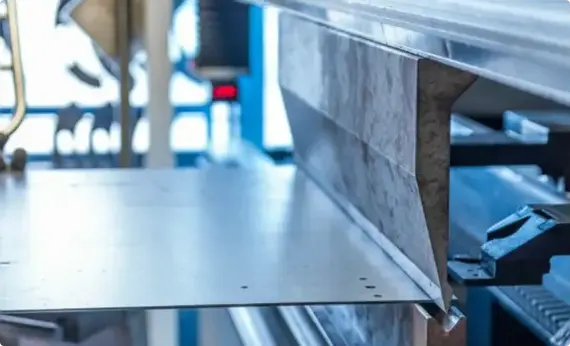
ASTM A240 329 stainless steel plate in-depth analysis
ASTM A240 329 stainless steel plate is a high-performance steel with a wide range of applications in many industries.
ASTM A240 329 stainless steel plate is a high-performance steel with a wide range of applications in many industries.
The manufacturing process begins with the selection of raw materials. The raw materials used in the production of ASTM A240 329 stainless steel plate, such as ferroalloys, chromium, nickel, etc., are subject to strict purity and quality control standards. These high quality raw materials are put into the furnace for melting. During the melting process, precise control of the temperature and close monitoring of the ratio of each element are key aspects. Precise temperature setting ensures that the various metal elements are fully integrated to form a steel that meets the chemical composition requirements of ASTM A240 329 stainless steel plate, in which chromium gives it good corrosion resistance, and nickel enhances its comprehensive performance such as toughness and strength.
After melting, the liquid steel is cast into slabs. Subsequently, the slab enters the hot rolling process, in the hot rolling process, ASTM A240 329 stainless steel plate to be subjected to specific rolling pressure, speed and temperature conditions. Reasonable rolling parameters can refine the grain structure of steel, further enhance its mechanical properties, so that its strength and toughness to achieve the ideal balance.
Annealing is also a common process step. Through annealing, ASTM A240 329 stainless steel plate internal residual stress can be effectively eliminated, the organizational structure is more uniform and stable, which helps to improve its processing performance and dimensional stability in subsequent use.
ASTM A240 329 stainless steel plate has significant advantages. Its corrosion resistance is excellent, in a variety of corrosive media environment can maintain good performance, whether acidic or alkaline environment, can effectively resist corrosion. Its high strength, can withstand greater pressure and load, in some high-pressure containers, chemical equipment and other structures with excellent performance. At the same time, its good toughness ensures that brittle fracture is not easy to occur when subjected to shock or vibration.
In the application field, ASTM A240 329 stainless steel plate is widely used in the chemical industry, such as reactor, piping system, etc., due to its corrosion resistance can prevent the erosion of chemical substances. In the food processing industry, it is used to make equipment components that come into contact with food, as it does not contaminate food and can meet hygiene standards. In the field of marine engineering, such as seawater desalination equipment, some structural components of marine platforms also have a large number of applications, by virtue of its seawater corrosion-resistant properties to protect the long-term stable operation of equipment and facilities.
stainless steel processing
The manufacture of stainless steel involves a series of processes. First, the steel is melted, and then it is cast into solid form. After various forming steps, the steel is heat treated and then cleaned and polished to give it the desired finish. Next, it is packaged and sent to manufacturers, who weld and join the steel to produce the desired shapes.

Melting and Casting
The raw materials that constitute a stainless steel item are placed together and melted in a giant electric furnace. Intense heat is applied rigorously for a period of 8 to 12 hours during this step. Once the melting is complete, the molten steel is cast into desired semi-finished forms. Some of the most common forms or shapes include slabs, blooms (rectangular shapes), billets (these could either be round or square), rods, and tube rounds.

Forming
In the second stage, the semi-finished steel shapes undergo a series of forming operations. For instance, the stainless steel is hot rolled (heated and passed through enormous rolls). The blooms and billets mentioned above are converted to bar and wire. The slabs on the other hand are formed into plates, strips or sheets. It is very common to turn semi-finished steel shapes into bars, as it is the most versatile stainless steel form (it comes in all grades and sizes). You have round, square, octagonal, and hexagonal bars, each suitable for a different type of application.

Heat Treatment
The various stainless steel forms undergo a thorough annealing process during this step. Annealing is another name for heat treatment where the stainless steel is heated and cooled in a controlled environment. The purpose of this heat treatment is to relieve the pent-up stress inside the stainless steel and soften the material to make it more suitable for a wide variety of applications. The people in charge of carrying out the annealing process have to be very careful about the conditions as even the slightest of changes in the temperature, pressure, duration, or cooling rate could result in a faulty product.

Descaling
During the annealing process, a certain amount of scale appears on the surface of the stainless steel. This scale can be removed using a number of different processes that are collectively known as descaling. Pickling is one of the more common methods of carrying out the descaling process.

Cutting
The semi-finished, heat-treated, and descaled stainless steel forms are cut into specific shapes in this step. Mechanical cutting is performed with the aid of guillotine knives, blanking, nibbling, and high-speed blades.

Finishing
Finishing is applied to help the stainless steel product achieve its signature aesthetically appealing appearance. Finishes are also needed to make the stainless steel product smooth and easier to clean, which is a top requirement in sanitary applications.
